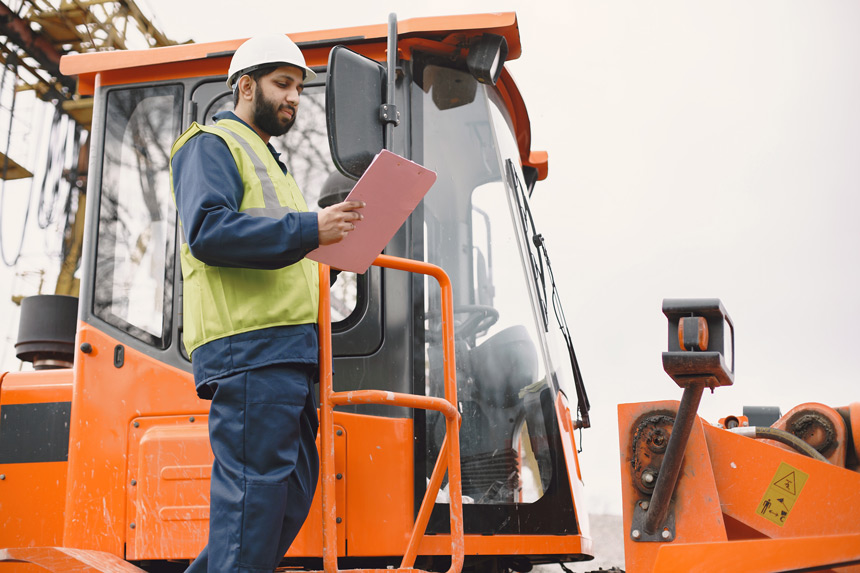Table of Contents
- Introduction
- Importance of Crane Inspection
- Types of Lifting Equipment
- Cranes
- Lifting Appliances
- Lifting Gears/Accessories
- Safety Equipment
- Earth Moving Equipment
- Key Facts and Figures
- Comparison of Lifting Equipment
- FAQs
- Conclusion
1. Introduction
Crane and lifting equipment play a vital role in various industries, including construction, manufacturing, and logistics. However, improper handling and lack of regular inspections can lead to severe accidents and financial losses. This article explores the significance of crane inspection, various types of lifting equipment, safety measures, and the importance of earth-moving equipment in ensuring safe operations.
2. Importance of Crane Inspection
Crane inspection is crucial for maintaining operational safety and compliance with industry standards. Regular inspections can identify potential issues, ensuring that cranes operate efficiently and safely. A well-executed inspection can prevent equipment failure, reduce downtime, and save costs in the long run. The Occupational Safety and Health Administration (OSHA) mandates regular inspections of lifting equipment to ensure worker safety.
3. Types of Lifting Equipment
Lifting equipment encompasses various tools and machinery used to raise and lower loads. Here are the primary categories:
Cranes
- Mobile Crane: Versatile and can be moved to different locations.
- Gantry Crane: Ideal for moving heavy loads within a specific area.
- Crawler Crane: Offers stability on uneven surfaces.
- Tower Crane: Commonly used in tall building construction.
- Reach Stacker Crane: Effective for handling shipping containers.
Lifting Appliances
- Chain Block: A manual hoisting device using a chain.
- Lever Hoist: Portable and easy to use for lifting loads.
- Swing Jib: Allows for versatile lifting capabilities.
- Spreader Bar: Used to distribute weight evenly when lifting.
Lifting Gears/Accessories
- Chain Sling: Provides secure lifting points for loads.
- Wire Rope Sling: Durable and strong, ideal for heavy lifting.
- Shackles: Connect lifting equipment to loads.
- Webbing Sling: Lightweight and versatile for various applications.
- Round Sling: Excellent for lifting delicate items without damage.
4. Safety Equipment
Safety equipment is essential for protecting workers during lifting operations. Key safety gear includes:
- Fall Arrestor: Prevents falls from heights.
- Safety Harness: Secures workers when operating at elevated levels.
- Lad-Saf: A safety system designed for ladders.
- Lanyard: Connects the harness to a secure point.
5. Earth Moving Equipment
Earth-moving equipment, such as excavators, backhoe loaders, graders, and bulldozers, is integral to construction and demolition tasks. Regular inspection and maintenance ensure that these machines operate effectively and safely, reducing the risk of accidents on-site.
6. Key Facts and Figures
- OSHA Reports: Over 4,500 injuries are attributed to improper crane usage annually.
- Cost Savings: Regular inspections can save up to 30% on maintenance costs.
- Lifting Capacity: Modern cranes can lift loads exceeding 100 tons with proper inspection and maintenance.
7. Comparison of Lifting Equipment
| Equipment Type | Advantages | Disadvantages |
| Mobile Crane | Versatile, can be relocated easily | Limited lifting height |
| Gantry Crane | Ideal for workshops and factories | Requires significant space |
| Crawler Crane | Stable on uneven terrain | Slower transportation |
| Tower Crane | High lifting capacity for tall buildings | Requires assembly and disassembly |
| Chain Block | Cost-effective for lighter loads | Manual operation, labor-intensive |
8. FAQs
Q1: How often should cranes be inspected?
A1: Cranes should be inspected at least once a year, with frequent checks during regular operations.
Q2: What is the purpose of lifting equipment inspections?
A2: Inspections ensure that lifting equipment is safe, functional, and compliant with industry standards.
Q3: What safety equipment is necessary for crane operations?
A3: Essential safety equipment includes harnesses, lanyards, fall arrestors, and hard hats.
9. Summary Regular crane and lifting equipment inspection is critical for ensuring safety and efficiency in various industries. By understanding the types of lifting equipment, safety measures, and the importance of earth-moving equipment, businesses can minimize risks, reduce operational costs, and maintain compliance with safety regulations. Prioritizing inspections not only protects workers but also enhances overall operational performance


